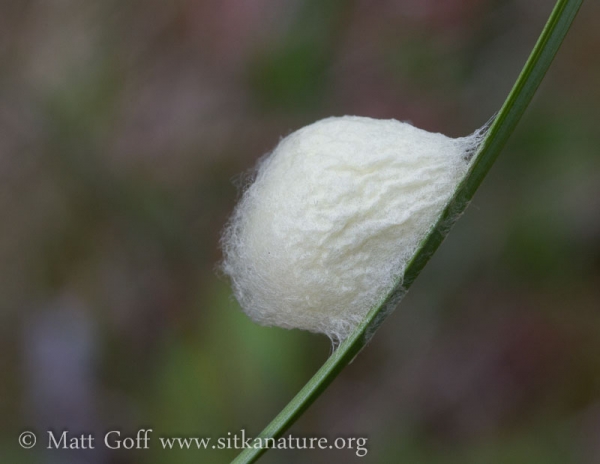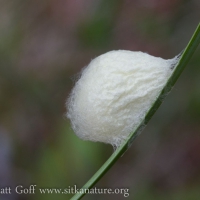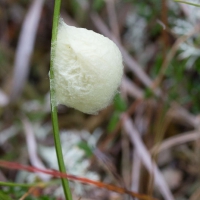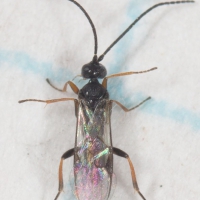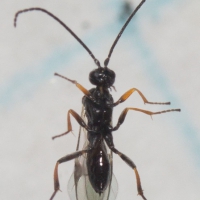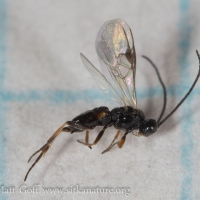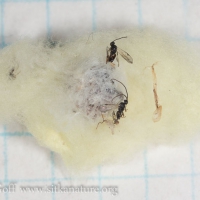On a late July hike, I noticed what appeared to be some sort of silken egg sack/case hanging from a sedge in a muskeg in Indian River valley. I wondered if it might be from a spider, since I couldn’t think of anything else that might have enough silk to make such a case. Still, it seemed odd that it would be hanging out in the open, most spider egg cases I’ve found before tended to be tucked away (and smaller). I collected it and left it in a container to see if anything might emerge.
It was a week later that I finally saw movement in the container. At least 25 small wasps were flitting about. I posted a picture on bugguide and was told they looked like parasitic wasps from the Microgastrinae subfamily of Braconidae. Apparently wasps in this group are known to form these sort of cocoon balls. It would seem to be a fairly species rich group, with over 2000 species described (and perhaps thousands more as yet undescribed). So, it seems the mystery is at least partially solved, though I have additional questions.
As always, I appreciate the help from the generous and knowledgeable folks on bugguide who have helped me learn a great deal more than I knew before about the terrestrial arthropod life where I live.
- How did these wasps (presumably as larvae) make this relatively case to pupate in?
- How did they get it up on the sedge?
- It sounds like this group mostly (exclusively?) parasitizes caterpillars. What kind would have been large enough to support this many parasites?
- Did they get the caterpillar to do the building before emerging from it? (I couldn’t see evidence that looked that way – though I didn’t pull it apart completely, it looked like a collection of eggs to me)
- How common is this sort of thing around here? (it’s the first I’ve noticed it)
